2022 Update: Originally this article had a price limit of $200. Since then the market changed, and I had to up the price limit to $300.
Table of Contents
Introduction: Important Considerations for a Bench
The way a bench feels makes a huge impact on your comfort and sense of safety when lifting, especially heavy bench presses.
Poorly-made benches that are sold for $100-150 are not worth your time. A bench like that ruins the experience. It doesn’t feel like the bench at a commercial gym at all. When you get up to around $250, things start to change, at least as of writing.
Padding
First, low-quality benches have the cheapest foam imaginable. It compresses easily. It might be okay when you first lay on it. Then you start to press the bar and add weight, and suddenly you can start to feel the edges of the plywood backboard under the padding, ie: it bottoms out on you. Even worse, the squishy foam causes you to be unstable. You are forced to utilize your legs even more to try to keep stable.
It’s the same kind of reason that knowledgeable people tell you not to squat with running shoes, or with anything other than thin-soled shoes. Soft Padding is really bad for stability when lifting heavy weight.
Sturdy foam padding is the best. It’s just enough to protect your bones and keep you comfortable versus, say, bench pressing on a solid wood bench (yeah, such a thing exists). You can put the maximum amount of power into your pressing, without worrying about going careful and slow to keep your balance on a squishy pad.
2″ to 3″ padding is generally good. Anything less than 2″ represents a lousy bench.
Pad Gap
The dreaded pad gap!
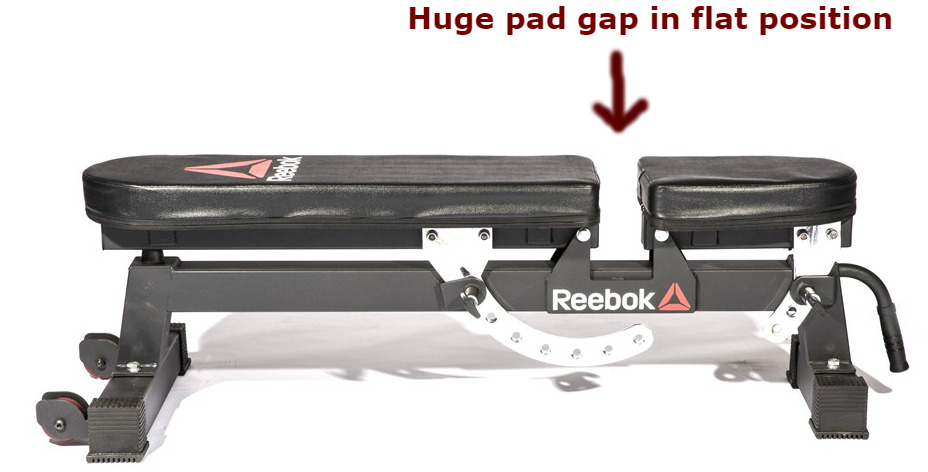
Above is an example of a bench I do not include in my recommendations.
Because of the way the back pad needs to incline up, a certain amount of room is required for the pad to tilt up into, and in the flat position you end up with a big gap between the pads.
This gap ends up being somewhere around your lower back. You can often work around it. Sometimes it’s tricky, such as if you rock yourself back onto the back with a dumbbell in each hand and hope you’ve situated yourself around the gap right. With good engineering, manufacturers have avoided these larger pad gaps.
Sometimes poorly-designed benches have a hinge sticking up between the two pads that you could hit your tailbone on.
Height
Benches should be around 17″ high in flat position, give or take half an inch. This gives most people a good body position where they can plant their feet well on the floor without stretching their legs down. This gives you a solid base to generate more power in your lift and remain stable.
There’s pretty much only two reasons that some manufacturers have made benches higher than 18″. The first reason is manufacturers ignorantly copying the designs of other companies, without consulting anyone with actual experience lifting weights who knows what a good bench should be like. The second reason is to fit a leg developer attachment on the front of the bench, which only works if it’s high enough to prevent your feet from hitting the floor as you do leg extensions.
Sturdiness
This is hard to quantify. Several things go into making a bench sturdy.
11-gauge, 2″x3″ steel tubing in some parts will help keep it from flexing under heavy weight. It doesn’t all have to be that large, but some good steel tubing like that is a good sign. A bench made entirely with smaller or thinner steel is not likely to outright break on you with too much weight, at least not right away. The issue is more that the slight flexing could damage various connection points. This kind of wear on a bench’s parts could cause more wobbling over time. Not to mention the feel of it flexing could affect your confidence at going up in weight.
Cheap benches tend to have back pads that wobble, either right away as you lay on it or under a heavy load. It has to do with the backrest angle adjustment mechanism. The parts need to be heavy duty and fit snugly together so that there’s no lateral rotational wobble of the backrest, while still allowing the backrest to swing up and down for easy enough adjustment.
You can also kind of tell how sturdy a bench likely is by the weight. The heavier the better. Anywhere around 50 lbs is pretty light for an adjustable bench. Really good (but expensive) ones hover around 100 lbs and are quite movable with built-in wheels.
Okay, that about does it for the most important features of a bench. On to a few benches in detail.
Titan Adjustable FID Bench
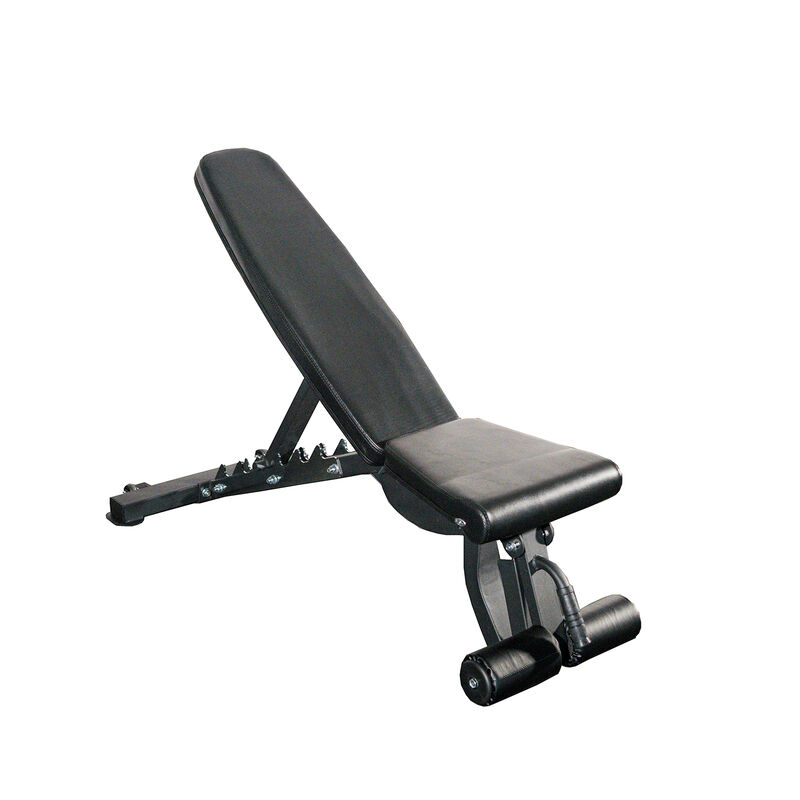
| Weight | 81 lbs |
| Weight Capacity | 1,500 lbs |
| Pad Gap | 2″ |
| Price | $290 |
Like Body Solid, XMark and others, Titan initially made the mistake of doing a curved front foot design that gets in the way of your own feet. The best design has a single front foot to stay out of your way. Titan made the fix in 2020 that you can see above. Their new bench otherwise looks identical to the old one. I don’t know if they reinforced anything else to allow for the single front foot.
PowerBlock Sport Bench
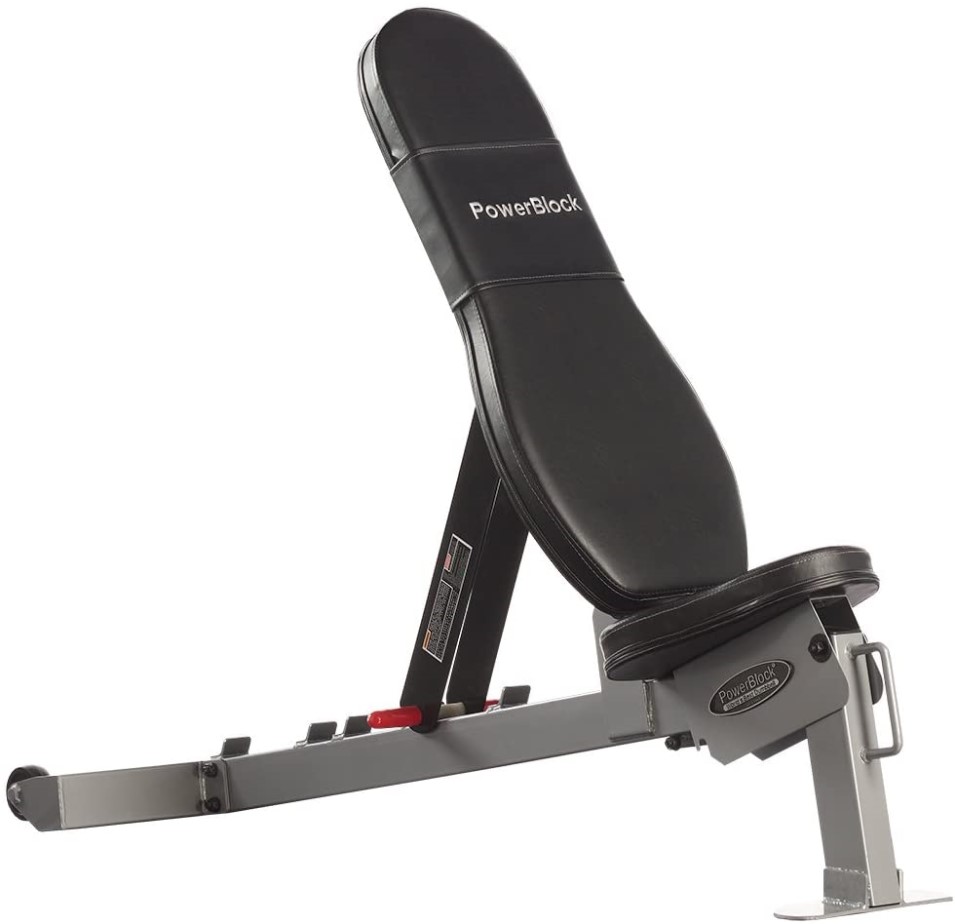

| Weight | 57 lbs |
| Weight Capacity | 550 lbs |
| Pad Gap | 2″ |
| Price | $259 |
Okay, the weight capacity is honest. 550 lbs. Remember, that includes your body weight. This is not a particularly strong bench compared to others. Most people will not be loading it close to 550 lbs. The issue is that it must not be as strong as the other benches and is not likely to feel as good even when loaded far under that weight.
I like the single-post front foot design, which is what you see in very high quality benches. Unlike Titan’s, this design is sturdy enough without having splayed-out front feet that get in the way. Or I mean, it’s sturdy enough up to 550 lbs.
I have shaky confidence in PowerBlock products. Their dumbbells, in my opinion, are not as good as the Ironmaster dumbbells (see my comparison). The class action suit against PowerBlock for their faulty urethane dumbbells doesn’t look good. This bench continues to get great reviews, however, and there’s nothing really bad that I can find about it.
Rep Fitness AB-3100 V3
| Weight | 77 lbs |
| Weight Capacity | 1,000 lbs |
| Pad Gap | 2″ |
| Price | $270 |
I saved the best for last. Among Rep’s range of inexpensive flat and adjustable benches is this adjustable bench.
They offer a few frame colors: red, blue, and black. Enough to satisfy some very minimal color preferences. Maybe they’ll have lime green and others soon.
Unlike the PowerBlock bench, this has a 1,000 lb weight capacity, which of course is determined by some unknown method by each manufacturer but is still a fairly good number to look at for weight benches in particular (but not some other equipment).
At 77 lbs, this is not a lightweight bench. Cheap, light benches like this are more around 50 lbs or even less. This weight speaks to the gauge and size of steel tubing used, not cutting corners with flimsy steel.
From all accounts, there’s almost no movement at all when you lay on and load this bench with weight. Keep in mind that Rep makes similar benches priced up to $500. There would be no reason for them to make $500 bench if this one felt absolutely rock solid at $209. Bottom line, it’s a good value for the money. I don’t think you’ll be disappointed, but hey, if somehow you are, leave a comment below and let me know your thoughts!
If you would prefer to spend more and get a bench that you can’t possibly have complaints about, see my post on the top 4 adjustable benches that range up to about $550.

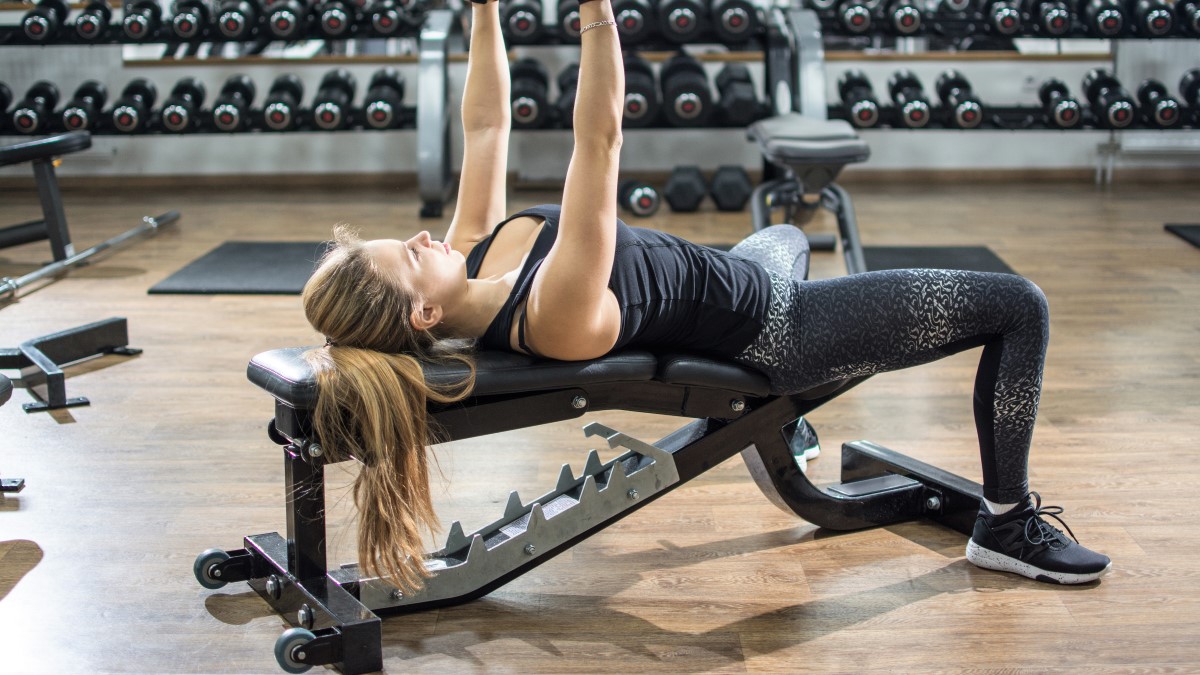
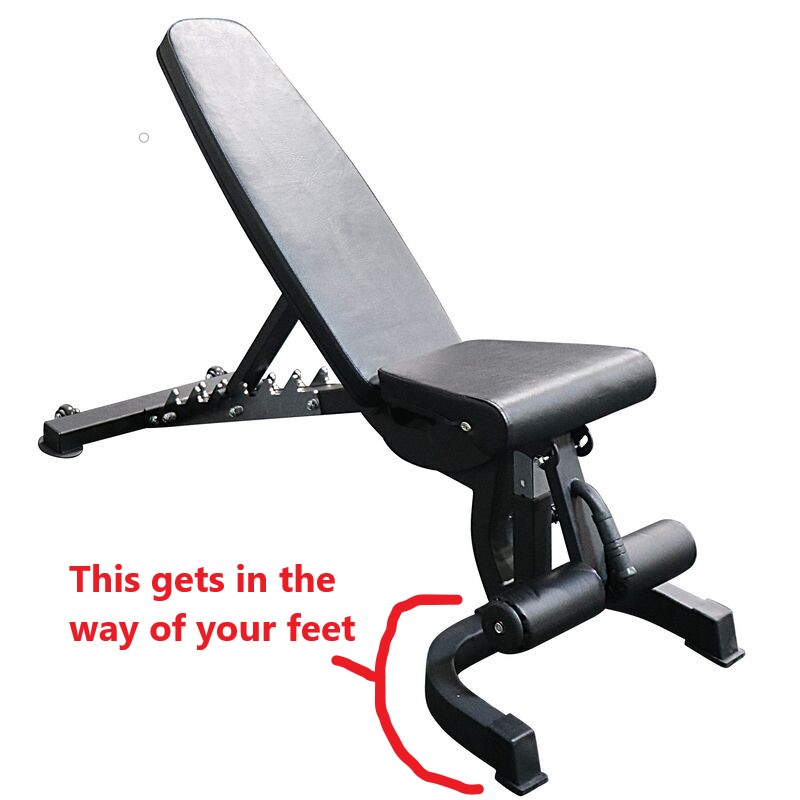
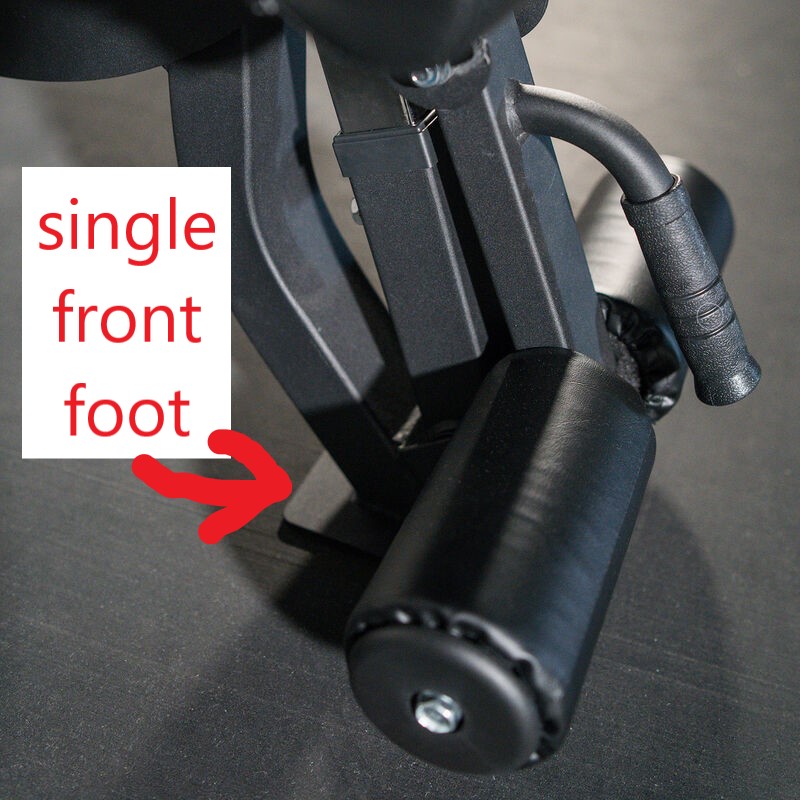
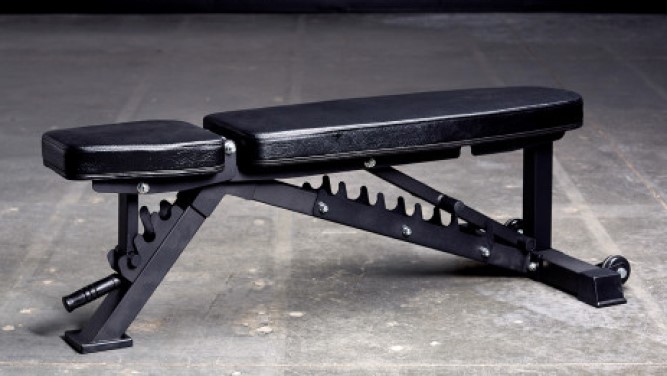
Do you know if the rep adjustable bench pads are compatible with the Titan adjustable bench? I found out Rep is offering wide pads for adjustable benches and I’d like to add one to my Titan bench. Thanks
The current FID adjustable bench from Titan at 250 bucks doesn’t have that U Design foot anymore. It’s a single post. The 3100 from Rep doesn’t have a decline position and is now using up to 14 gauge steel. The equivalent fid is the 3000 and that definitely costs more, especially when you throw in shipping.
I just ordered the Rep and they increased the price to $209- Your review was helpful in that I don’t want the issues that come with the feet of the Titan FID. With shipping the Rep bench only cost $10- more than Titan’s
Nice grab! I’ll figure out how to get this article updated sometime soon… Maybe I”ll change it to “under $250” or find another good bench under $200. But it’s hard to not value Rep’s bench as one of the very best for the price point.